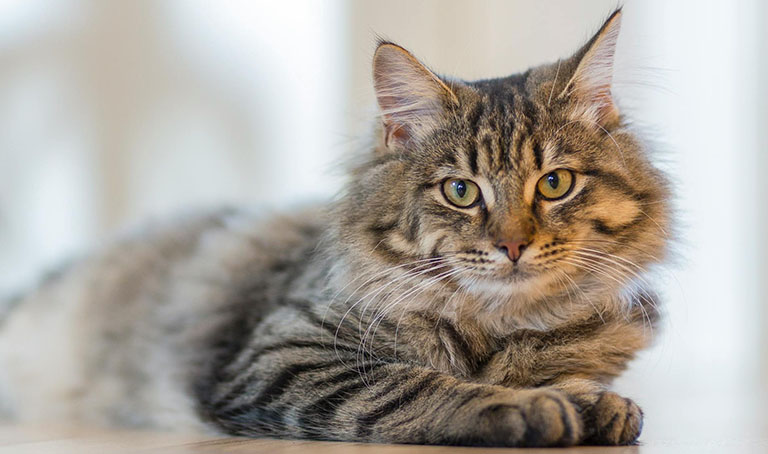Grooming isn’t just about keeping your cat looking pristine; it’s about fostering a bond of trust and ensuring their overall health and well-being. From understanding your cat’s unique grooming needs to troubleshooting common problems, this blog covers everything you need to know to keep your feline friend looking and feeling their best. Whether you’re a seasoned cat owner or new one, these tips and techniques will help you navigate the grooming process with confidence and ease, creating a positive experience for both you and your beloved pet.
Understanding Your Cat’s Grooming Needs
Different Coat Types
When it comes to grooming your feline friend, one size definitely does not fit all. Understanding your cat’s specific grooming needs begins with recognizing the differences between coat types. Cats generally fall into two categories: short-haired and long-haired. Short-haired cats, such as the sleek and glossy Siamese or the compact American shorthair, typically require less maintenance in terms of grooming. Their coats naturally shed less and are less prone to matting, though regular brushing is still important to minimize shedding and keep their coat healthy.
On the other hand, long-haired breeds like the majestic Maine Coon or the elegant Persian require more intensive grooming routines. Their luxurious coats are prone to matting and tangling, making daily brushing a necessity to prevent discomfort and potential skin issues. Long-haired cats may also benefit from occasional trims to keep their fur manageable and reduce the risk of matting.
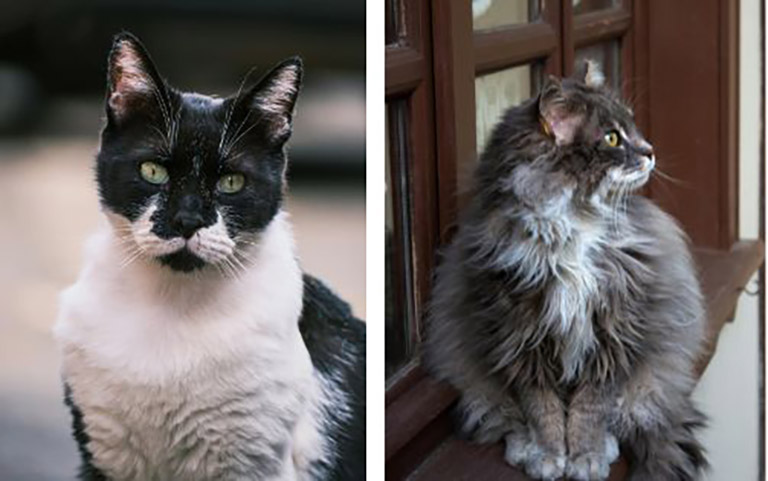
Health Benefits
Grooming isn’t just about keeping your cat looking neat and tidy; it also plays a crucial role in their overall health and well-being. One significant health benefit of regular grooming is preventing matting and tangles in your cat’s fur. Mats can not only be uncomfortable for your feline friend but can also lead to skin irritation and even infections if left untreated. By regularly brushing your cat, especially if they have a long or dense coat, you can effectively prevent mats from forming and ensure their coat remains smooth and healthy.
Grooming also helps reduce the occurrence of hairballs, a common issue particularly among long-haired cats. By removing loose fur through brushing, you can minimize the amount of hair your cat ingests during grooming, reducing the likelihood of hairball-related discomfort and digestive issues.
Furthermore, grooming provides an opportunity to closely monitor your cat’s skin for any signs of irritation, inflammation or parasites such as fleas or ticks. Early detection of such issues allows for prompt treatment, helping to prevent more serious health problems down the line. Overall, by incorporating regular grooming into your cat’s routine, you can not only keep them looking their best but also contribute to their overall health and happiness.
Cat Grooming Process
Grooming your cat is an essential part of maintaining their health and well-being. Here’s a step-by-step guide to help you through the process:
Brushing Your Cat
The frequency of brushing your cat depends largely on their coat type. Short-haired cats typically require brushing only once or twice a week to remove loose fur and distribute natural oils. In contrast, long-haired breeds need daily grooming sessions to prevent matting and tangles. For short-haired cats, a slicker brush or a silicone curry brush like a Zoom Groom is ideal for keeping their coat in top condition. For long-haired cats, start with a wide-toothed comb to gently detangle any mats, then follow up with a bristle brush to smooth their luxurious fur.
If your cat is resistant to brushing, it’s important to introduce the grooming process gradually. Begin with short sessions, allowing your cat to get used to the sensation, and offer treats or praise to create a positive association with grooming. Should your cat become stressed or agitated, take a break and try again later. Patience and consistency are key to helping your cat become comfortable with regular grooming.
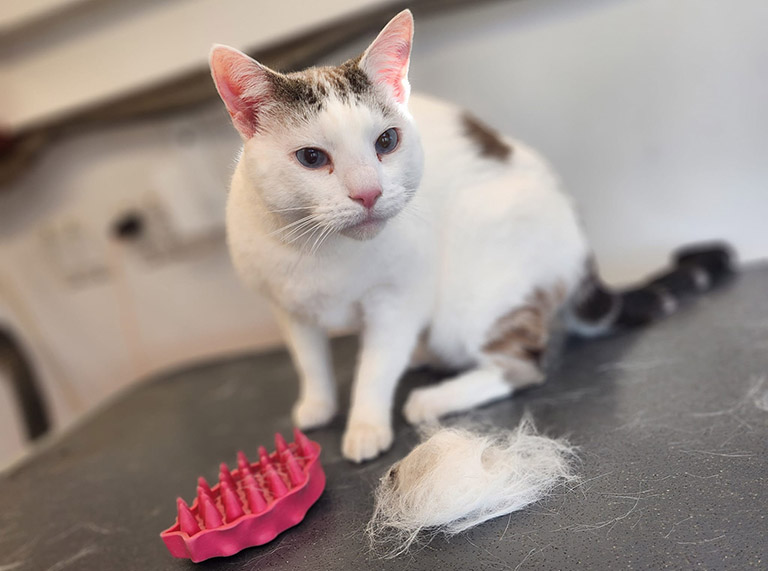
Bathing Your Cat
To ensure a stress-free bath, preparation is key. Consider utilizing a rubber bath mat to prevent slipping in the tub or sink. If you’re concerned you may get scratched during the process, consider wearing long sleeves to protect your arms (though be prepared for them to get wet). Gather all necessary supplies before bringing your cat into the bathroom.
Using a hand-held sprayer or cup, wet your cat with lukewarm water and gentle strokes. Take care to avoid their eyes, nose or ears. Massage with the directed amount of cat shampoo (we recommend degreasing shampoo) and rinse off thoroughly before drying.
Once the bath is complete, dry your cat thoroughly with a towel or a hairdryer set on a low setting. This careful approach can help minimize stress for both you and your cat, making the bathing process more manageable.
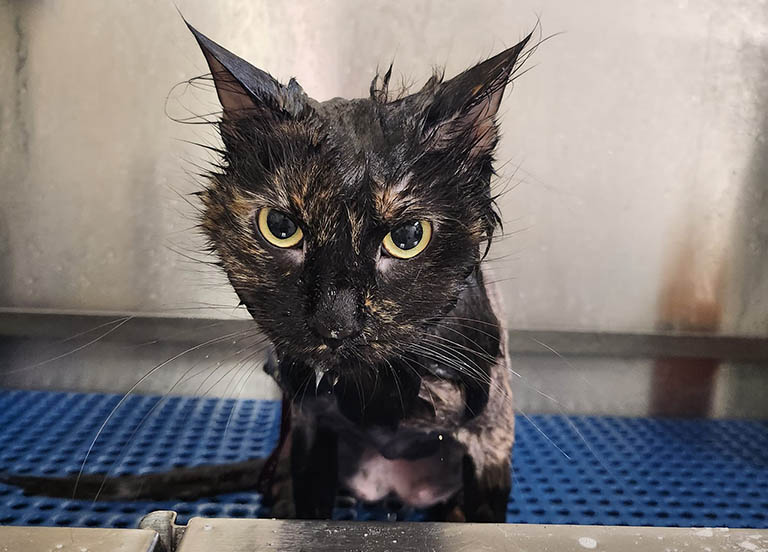
Nail Trimming
Cutting your cat’s nails every 2-3 weeks is important for both your cat’s health and to protect yourself, your family and your furniture. While the job can be done by one person, the process is often easiest with an extra set of hands so that one person can hold the cat in place while the other does the nail trimming. Trimming nails is also easiest when cats are used to their paws being handled, so it’s a good idea to regularly touch them to get your cat accustomed to the routine.
To begin, secure the cat in place. If doing the job yourself, hold the animal in place with the crook of one arm and hold a paw with the other hand. To extend the nail, gently press down with your thumb and pointer finger on the top and bottom of the joint. Always make sure to only trim the tip of the nail, avoiding the quick to prevent bleeding and pain. The quick is the pink area within your cat’s nail that contains blood vessels and nerves.
If your cat is nervous or resistant to nail trimming, try wrapping them in a towel or enlisting the help of a friend or family member to hold them steady while you trim their nails. If you’re unsure about how to safely use nail clippers, consider consulting with your veterinarian or a professional groomer for guidance.
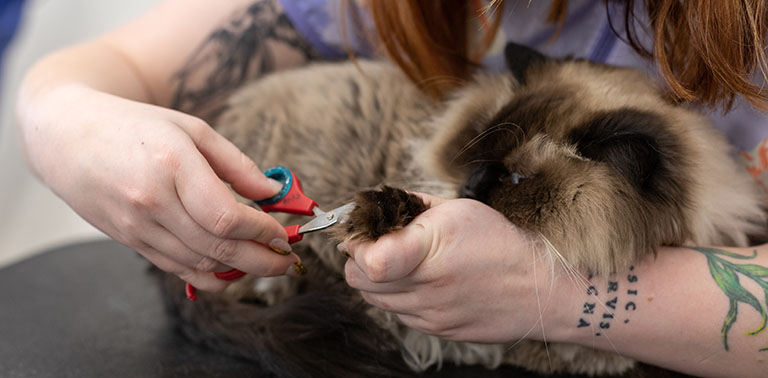
Dental Care
Dental health is crucial for your cat’s overall well-being, as poor oral hygiene can lead to gum disease, tooth decay and other health issues. Regular dental care can help prevent these problems and keep your cat’s teeth and gums healthy.
Use a cat-specific toothbrush and toothpaste to brush your cat’s teeth, focusing on the outer surfaces in gentle circular motions. Start slowly and gradually increase the duration of brushing sessions as your cat becomes more comfortable.
Brushing a cat’s teeth is not for the faint of heart. If your cat refuses to tolerate toothbrushing, consider alternative dental care options such as dental treats, water additives or dental toys designed to promote oral health.
Creating a Positive Grooming Experience
Building Trust
Establishing trust is essential for successful grooming sessions with your cat. Start by scheduling grooming sessions when your cat is naturally calm and relaxed, such as after a meal or a nap. This sets the stage for a positive experience, as your cat is more likely to be receptive to grooming when they’re feeling at ease.
Gradually introduce grooming tools to your cat to help them acclimate and build trust. Begin by simply placing the tools near your cat during grooming sessions, allowing them to sniff and investigate at their own pace. As your cat becomes more comfortable with the presence of the tools, you can slowly incorporate gentle touches and movements with the tools, always rewarding calm behavior with treats or praise.
Reward System
Implementing a reward system works for some cats. Use a combination of treats and praise to positively reinforce good behavior during grooming sessions. Offer treats as rewards for staying calm and cooperative, and lavish your cat with praise and gentle strokes to reinforce their positive behavior. Consistently using this reward system can help create a positive association with grooming and make the experience more enjoyable for your cat.
Comfort and Safety
Ensuring a comfortable grooming environment is essential for your cat’s well-being. Create a quiet and calm space free from distractions, where your cat feels safe and relaxed. Pay close attention to your cat’s body language and behavior during grooming sessions, and be mindful of signs of stress such as flattened ears, dilated pupils or attempts to escape. If your cat shows signs of distress, know when to stop and give them a break.
Troubleshooting Common Grooming Problems
Dealing with Matting
Matting can be a common grooming challenge for cat owners, but with the right approach, it can be managed effectively. Safely removing mats starts with gently teasing them apart using your fingers or a mat splitter, taking care to avoid pulling or tugging on your cat’s skin. For stubborn mats, consider using a detangling spray or conditioner to help loosen the hair. Be careful not to cause brush burn.
To prevent future mats, establish a regular brushing routine tailored to your cat’s coat type, focusing on areas prone to matting such as behind the ears and under the armpits.
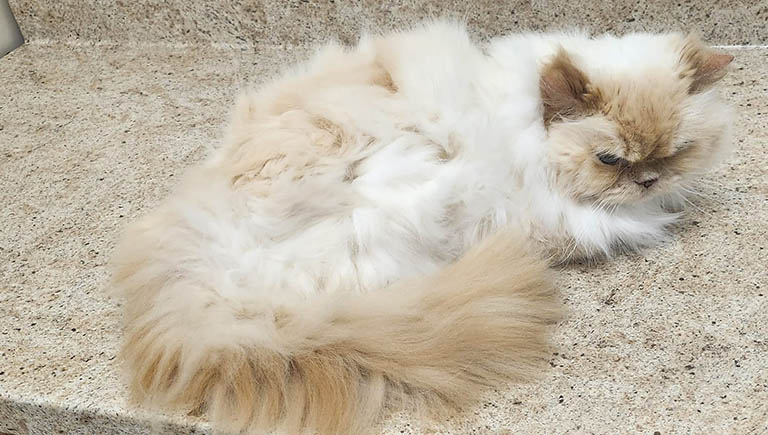
Managing Shedding
Shedding is a natural process for cats, but with a few proactive measures, you can help minimize the amount of loose fur in your home. Regular grooming routines are key to managing shedding, as frequent brushing helps to remove loose hair before it has a chance to accumulate. Use a high-quality brush suited to your cat’s coat type, and aim for brushing sessions at least once or twice a week.
Additionally, adapting a cat’s diet can decrease shedding. Foods rich in omega-3 fatty acids, such as fish or flaxseed oil, can help promote a healthy coat and reduce excessive shedding. By combining regular grooming with a balanced diet, you can effectively manage shedding and keep your cat looking and feeling their best.
Smoochie Pooch offers a Deshed Treatment for cats. This service can be added to your pet’s groom at any location that provides cat grooming services. Learn more about the service here or ask your groomer for more information.
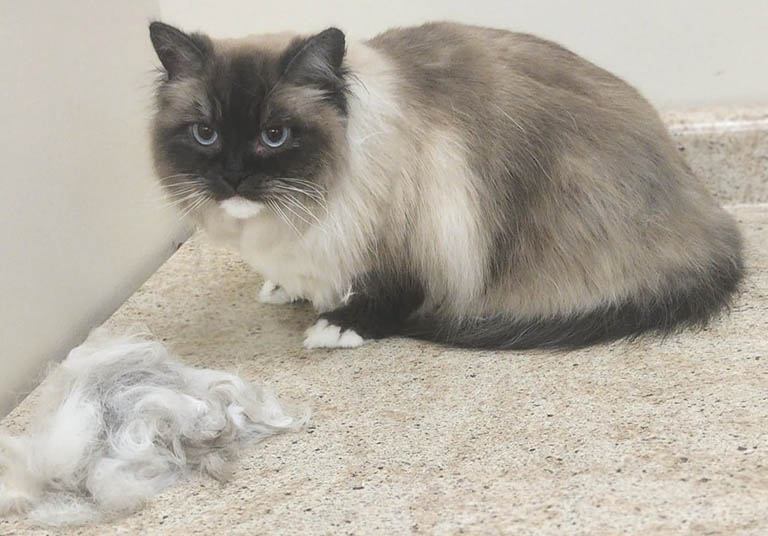
Handling Aggressive Behavior
Dealing with aggressive behavior in cats can be challenging, but there are techniques you can use to help calm your feline friend. Start by identifying the triggers for your cat’s aggression and avoiding situations that may provoke them. Provide plenty of opportunities for mental and physical stimulation through play and exercise to help alleviate stress and pent-up energy. When faced with aggression, remain calm and avoid reacting with fear or anger, as this can escalate the situation.
Instead, use gentle and reassuring tones to soothe your cat and encourage them to relax. However, if your cat’s aggression persists or becomes unmanageable, it may be time to seek professional help. A veterinarian or animal behaviorist can provide guidance and support tailored to your cat’s specific needs, helping to address underlying issues and develop strategies for managing their behavior effectively.
Grooming for a Happier and Healthier Cat
By prioritizing regular grooming, creating a comfortable environment and using positive reinforcement techniques, you can help ensure that grooming sessions are a stress-free and enjoyable experience for your cat. From preventing matting and shedding to addressing aggressive behavior, the key is to approach grooming with patience, understanding and a willingness to adapt to your cat’s individual needs. With the right tools, techniques and mindset, you can make grooming a positive and rewarding part of your cat’s routine, strengthening your bond and enhancing their overall quality of life.


